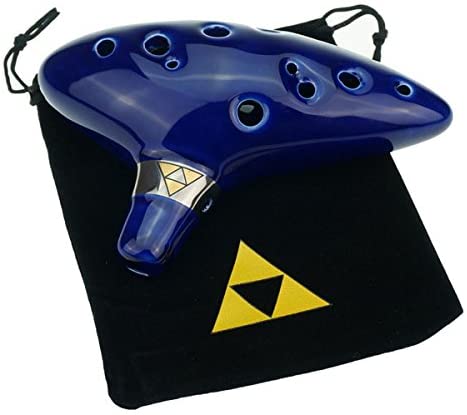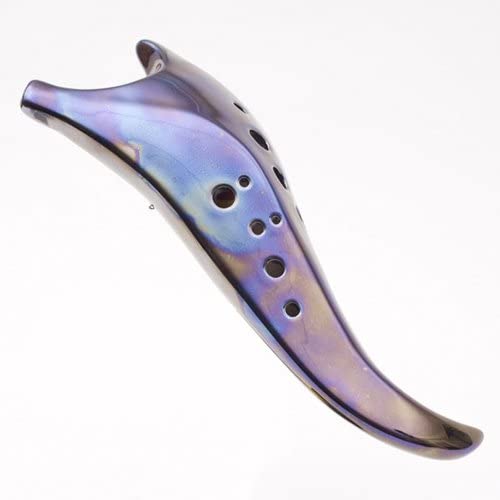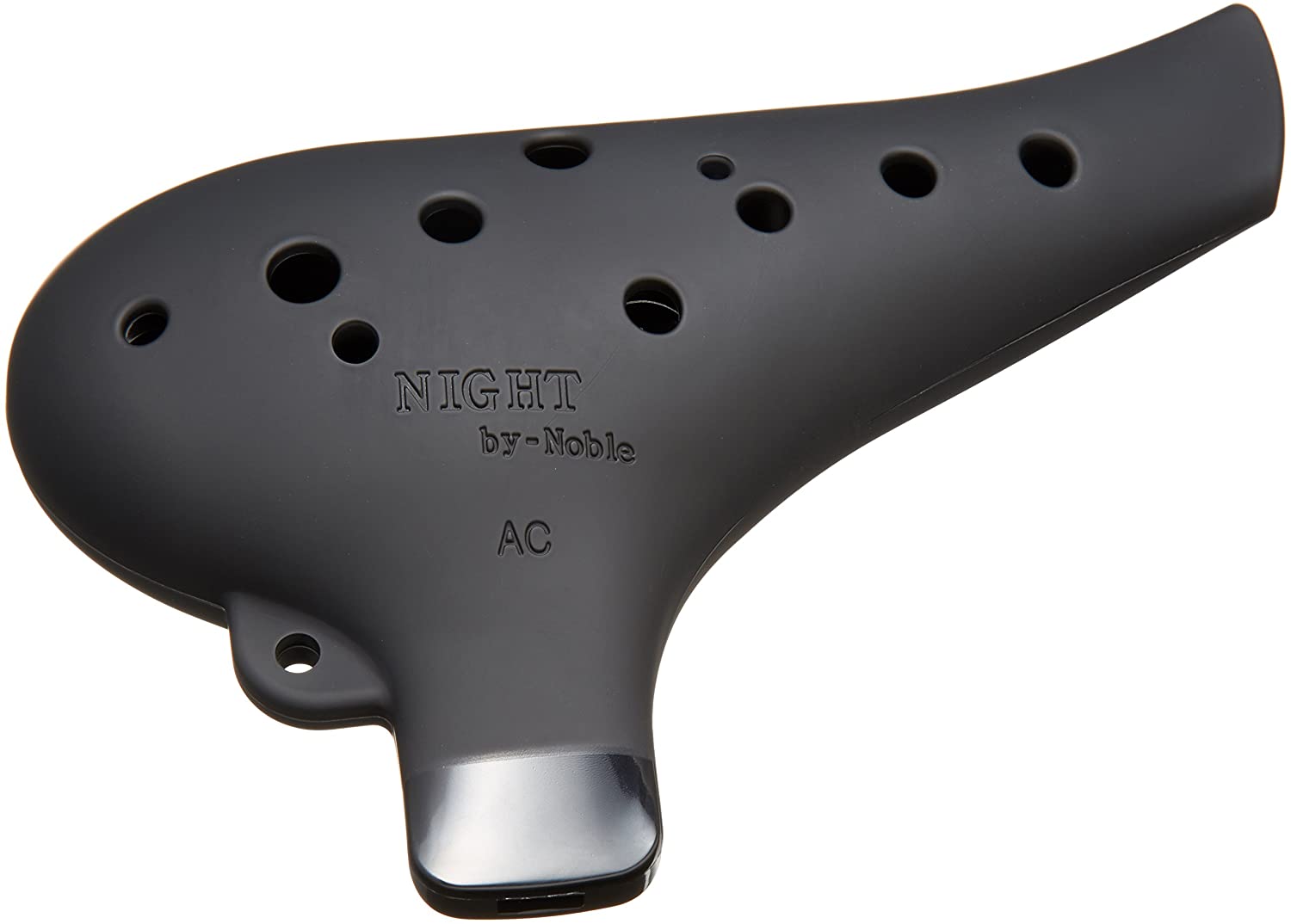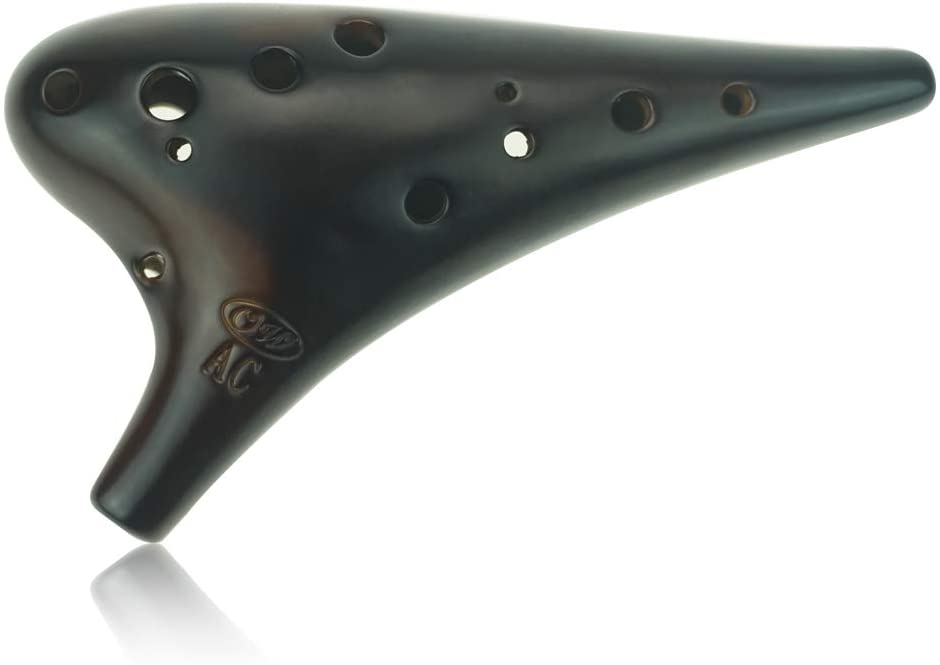Best Budget

Editor's Pick

Best Midrange

Thomas Boxtiger
Head Music Editor
If you're looking for a new instrument to add to your repertoire, the ocarina is an excellent choice. These flute-like instruments are affordable, unique, easy to learn, and they carry a very distinct sound when played. They're definitely rather off the beaten path when it comes to instruments, however, so it can be hard to determine what makes a good ocarina. We've put together five product recommendations as well as a buying guide to help you settle on the best ocarina for your personal use case below.
1. "Cheffort" 12 Hole Ocarina

Let’s start off the list with the reason why most of you are here, I presume. The Cheffort 12-Hole Ocarina is a working replica of the one found in The Legend of Zelda: Ocarina of Time game. It measures in at 6” x 4.3” (L x W) and is made of kiln-fired ceramic. It also comes with a pouch with the Tri-Force logo and a songbook that features the game’s most memorable medleys. A fingering chart is also included with the songbook for beginners.
Pros
- Affordable price for a ceramic ocarina.
- An exact replica of the one Link uses in the game.
- Comes with a songbook that includes popular Legend of Zelda music.
- Great gift for gamers.
Cons
- It has some tuning issues.
- Fragile.
2. "Forest Whisper" 12 Hole Ocarina

The Forest Whisper is an ocarina that is a good entry-level ocarina but can also meet the expectations of professionals. It is made from straw-fired ceramic and comes in at 7-inches in diameter. The pitch of this ocarina is at A4-F6 which also includes the flats and sharps. All in all, a solid option for those looking for ocarina they can use in their live performances.
Pros
- Produces a lovely tone. Not too “airy”.
- Beautiful aesthetics.
- Comes with a pouch and neck strap.
Cons
- Tuning is a bit off.
- Ceramic ocarinas are fragile.
3. Songbird 12 Hole Dragon Tooth Ocarina

A personal favorite of mine in terms of its design, the Songbird Dragon Tooth Ocarina is an impressive instrument in both presentation and performance. It uses the 12-hole system that delivers a vast range of notes from A to F. This is handcrafted with such care and uses the high-quality ceramic material. It also comes with a Legend of the Dragon Tooth storybook as well as a songbook. The metal chain is a nice touch to truly give this instrument that fantasy world look.
Pros
- Exotic and metal finish certainly makes it a standout on the shelf.
- Warm and pleasant sound.
- Feels comfortable to play.
Cons
- Larger than your standard ocarina.
- Made from ceramic so it is quite fragile.
4. OcarinaWind Bangkirai Wood Soprano

The OcarinaWind Bangkirai Ocarina is made from durable Bangkirai wood. As it is made of wood, expect it to deliver natural earthly sounds. It comes in at 2.5” x 1.2” (L x W) so it is considerably small. The product also comes with a free songbook and finger chart, ideal for beginners.
Pros
- Excellent and produces high tones.
- Made from wood so it is quite durable.
- Small and sleek design, perfect for kids.
Cons
- The small stature of this ocarina can be an issue for adults with larger hands.
5. Night by Noble Plastic Ocarina

The Night by Noble Ocarina takes a unique approach to how it is presented. While the material is plastic, it is manufactured in such a way that it feels like rubber. This texture delivers improved grip and is slip-resistant. The tune, at first, felt a bit flat. This can be rectified with a different mouth placement on the mouthpiece and the amount of breath you use. Once you have found the sweet spot, this ocarina sounds lovely.
Pros
- The rubber-like finish gives it added traction to prevent slips.
- Plastic material and construction are quite sturdy.
- Fingerholes are responsive.
Cons
- Plastic ocarinas tend to accumulate moisture over time.
2022 Buying Guide
Introduction
If you are a gamer/musician like me, chances are the first time you heard of the Ocarina was with The Legend of Zelda: Ocarina of Time in the Nintendo 64. Growing up, I had already cultivated a passion for music and Nintendo just put another musical instrument on my radar when I was a kid with this game. It is quite interesting to note that after the release of Ocarina of Time, ocarina manufacturers experienced a boom in their business. I am actually one of the thousands who bought an ocarina during this time and I have to say it was a worthwhile purchase.
For those who have just recently discovered this classic instrument, looking for the right one might be an issue. What do you look for in an ocarina? That is where this article comes in. We will discuss important elements about the ocarina so that you will know just what to look for when buying one. Afterwards, I’ll be giving you a short list of my personal favorite ocarinas in the market today. So, let us not waste any more time and get to it!
A Quick History
Flute-like instruments like the ocarina have been around in human history for about 12,000 years. The ocarina is actually a bit different in terms of appearance as it takes on a round jug-like appearance instead of the pipe design common with flute-like musical instruments. However, it does incorporate the standard flute construction of one hole to which you blow into and several smaller holes that you block to produce different tones.
The ocarina is simple to use and is actually easy to master. It rose in popularity during the mid-1800’s. Only during the 2000’s did the ocarina gathered steam once again and became a popular instrument thanks to a certain fantasy game series.
Types of Ocarinas
During the course of decades and centuries, ocarinas managed to evolve with different iterations. In fact, there are three major types of ocarinas around the world. They have the same core foundations but took different paths along the line.
Pendant Ocarina
Probably the most popular type of ocarina and is the version used in The Legend of Zelda games. The pendant ocarina is, as the name suggests, meant to be worn like a necklace. It is commonly attributed to the English 4-hole system that was introduced during the 1960’s. The 4-hole system makes it possible for pendant ocarinas to achieve 13 notes in chromatic range. There is another version of the pendant ocarina that utilizes an additional one, or at times, two thumbholes that further expand the notes you can play.
Transverse Ocarina
The transverse ocarina takes a different design approach. With this type of ocarina, the mouthpiece is perpendicular to the main frame of the instrument. Modern iterations of this ocarina have the mouthpiece angled at 45 degrees. This ocarina is one of the older types as it has been around since the mid-1800’s. It also utilizes the 10-hole Donati system but it is also common to find 12-hole transverse ocarina that was developed by Takashi Aketagawa in Japan during the 1920’s. Aketagawa’s version is considered better than the 10-hole Donati system as this version can produce sub-tonic notes.
Inline Ocarina
The inline ocarina is basically a mirror image of the transverse in terms of design. With an inline ocarina, the mouthpiece is located parallel to the main body of the instrument. Instead of blowing along the width, as is the case with transverse ocarinas, the person blows along the length of the ocarina. Inline ocarinas will come in various forms with a 9, 10, or 12-hole design.
What to Look For
When it comes to choosing the right ocarina, it will all come down to who will use this instrument. For example, ocarinas are quite popular with children so getting one that is sturdy and can survive a few falls is important. Ocarinas made from plastic is a good choice for children as they are both sturdy and cheap.
For those who are more skilled in their craft, an ocarina that is made of wood or stone will deliver what you need. Ocarinas that are made of wood or stone deliver a more authentic and earthy feel. If you prefer an ocarina that delivers top-notch sound and looks amazing, ceramic ocarinas are the best choice. Ocarinas that are made of ceramic are usually way more expensive but they do bring the sizzle to the steak, as the saying goes.
Finally, you should also check to see if the mouthpiece is perfect for your style and skill level. Beginners will find an articulated mouthpiece to be easier to play. Of course, the best ocarina in the world won’t do much help if you don’t practice. I recommend you memorize the right finger positions when playing the ocarina. With that skill in your arsenal, you are sure to make exceptional music even with the cheapest ocarina.
Conclusion
Ocarinas are beautiful musical instruments that are relatively easy to play. They're the perfect instrument for kids and are a great instrument for gamers, thanks in huge part to Nintendo. Choosing the best one will largely depend on the one playing the ocarina. Take into account all factors I pointed out earlier and you will land on the best ocarina that will fit your style.
